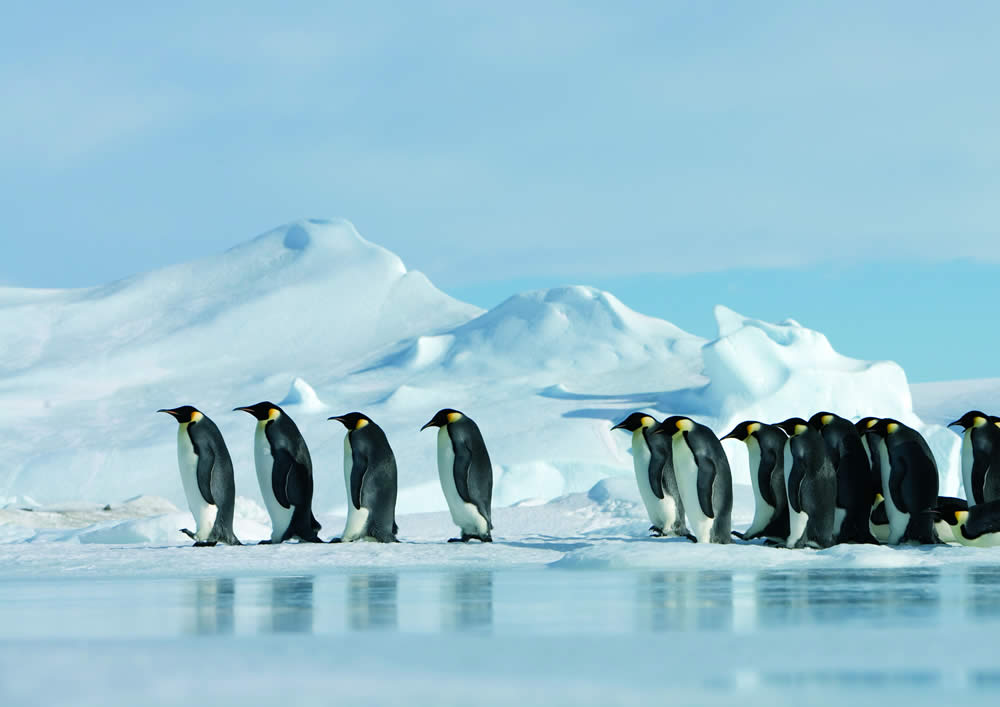Habitat: They live on the Antarctic ice, and
are one of only two species of penguin that inhabit the Antarctic continent
(the other being Adelie penguins). In the harsh cold climate, where wind chills
can reach -60°C, they huddle together to escape wind and conserve warmth.
Individuals take turns moving to the group's protected and warmer interior.
Breeding: Emperors breed in winter. Once females
lay a single egg, they take off on extended hunting trip that lasts up to two
months, and will leave the egg behind with their male partner. Depending on conditions,
females may need to travel 50 milesjust to reach the open ocean, where they
will feed on fish, squid, and krill.
Male emperors protect
their eggs by keeping it between their legs. This also gives the egg warmth.
During the incubation period, males are able to fast.
Once the females
return to the breeding site, they regurgitate food to the hacked chicks.
Food: They feed primarily on shoaling fish, small crustaceans and squid. They can dive more than 300 meters deep, and are able to remain under water for as long as 22 minutes if necessary. The majority of their dives last only 3-6 minutes.st only 3-6 minutes.

No comments:
Post a Comment